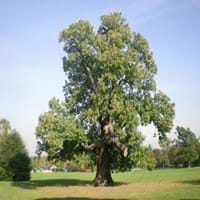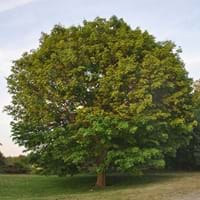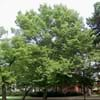Life Span
Perennial
Perennial
Origin
China, Korea
Europe
Types
Not Available
Bigleaf Maple, Black Maple, Silver Maple
Habitat
disturbed sites, Forest edges
Forest edges, Open areas, Roadsides, wastelands
USDA Hardiness Zone
4-8
3-7
Sunset Zone
2a, 2b, 3a, 3b, 4, 5, 6, 7, 8, 9, 14, 15, 16, 17
A2, A3, 1a, 1b, 2a, 2b, 3a, 3b, 4, 5, 6, 7, 8, 9, 14, 15, 16, 17
Habit
Spreading
Oval or Rounded
Flower Color
White, Light Yellow, Ivory
Lemon yellow, Yellow green, Chartreuse
Flower Color Modifier
Bicolor
Bicolor
Fruit Color
Light Green, Chartreuse
Green, Tan, Sandy Brown
Leaf Color in Spring
Green, Gray Green
Green, Light Green
Leaf Color in Summer
Gray Green, Dark Green
Green, Dark Green
Leaf Color in Fall
Yellow, Gold, Tan
Yellow, Red, Lemon yellow, Yellow green
Leaf Color in Winter
Not Available
Not Available
Leaf Shape
Lobed
Maple shaped
Plant Season
Spring, Summer, Fall
Spring, Summer, Fall
Sunlight
Full Sun
Full Sun, Partial Sun, Partial shade
Type of Soil
Clay, Loam
Clay, Loam, Sand
The pH of Soil
Acidic, Neutral
Acidic, Neutral, Alkaline
Soil Drainage
Well drained
Average
Bloom Time
Late Spring, Early Summer
Early Spring, Spring
Tolerances
Drought
Pollution, Drought, Soil Compaction
Where to Plant?
Ground
Ground
How to Plant?
Seedlings, Stem Planting
Stem Planting
Plant Maintenance
Low
Medium
Watering Requirements
Do Not over Water, Medium, Requires watering in the growing season
Do Not over Water
In Summer
Adequately
Lots of watering
In Spring
Moderate
Moderate
In Winter
Average Water
Average Water
Soil pH
Acidic, Neutral
Acidic, Neutral, Alkaline
Soil Type
Clay, Loam
Clay, Loam, Sand
Soil Drainage Capacity
Well drained
Average
Sun Exposure
Full Sun
Full Sun, Partial Sun, Partial shade
Pruning
Prune in fall, Remove damaged leaves, Remove dead branches, Remove dead leaves
Remove damaged leaves, Remove dead leaves
Fertilizers
Nitrogen, Potassium
Doesn't require fertilization when grown in rich soil
Pests and Diseases
Beetles, Leafhoppers
Decline, Girdling Roots, Red blotch, Verticillium Wilt, Wetwood
Plant Tolerance
Drought
Drought
Flowers
Showy
Insignificant
Flower Petal Number
Not Available
Single
Foliage Texture
Coarse
Coarse
Foliage Sheen
Glossy
Matte
Attracts
Not Available
Not Available
Allergy
Mild Allergen
Not Available
Aesthetic Uses
Not Used For Aesthetic Purpose
Showy Purposes
Beauty Benefits
Not Available
Not Available
Environmental Uses
Air purification, Food for animals, Food for birds, Food for insects, Nesting sites for birds, Prevent Soil Erosion
Air purification
Medicinal Uses
Low calories, Nutrients
Not Available
Part of Plant Used
Fruits, Seeds, Stem
Whole plant, Wood
Other Uses
Food for animals, Used as firewood, Used As Food, Used in biomass
Used as Ornamental plant, Used for its medicinal properties
Used As Indoor Plant
No
No
Used As Outdoor Plant
Yes
Yes
Garden Design
Edible, Feature Plant, Shade Trees, Street Trees
Feature Plant, Shade Trees, Street Trees
Botanical Name
CASTANEA mollissima
ACER platanoides
Common Name
Chinese Chestnut
Norway Maple
In Hindi
चीनी अखरोट
नॉर्वे मेपल
In German
chinesische Kastanie
Spitzahorn
In French
châtaignier chinois
Norvège Maple
In Spanish
Castaño chino
Noruega arce
In Greek
Κινέζικο κάστανο
Νεροπλάτανος
In Portuguese
castanha chinesa
Noruega bordo
In Polish
Kasztan chiński
klon zwyczajny
In Latin
Chinese Chestnut
Acer platanoides
Phylum
Tracheophyta
Magnoliophyta
Class
Magnoliopsida
Magnoliopsida
Family
Fagaceae
Aceraceae
Clade
Angiosperms, Eudicots, Rosids
Angiosperms, Eudicots, Rosids
Tribe
Gloxinieae
Not Available
Subfamily
Cassidinae
Not Available
Number of Species
Not Available
Not Available
Season and Care of Chinese Chestnut and Norway Maple
Season and care of Chinese Chestnut and Norway Maple is important to know. While considering everything about Chinese Chestnut and Norway Maple Care, growing season is an essential factor. Chinese Chestnut season is Spring, Summer and Fall and Norway Maple season is Spring, Summer and Fall. The type of soil for Chinese Chestnut is Clay, Loam and for Norway Maple is Clay, Loam, Sand while the PH of soil for Chinese Chestnut is Acidic, Neutral and for Norway Maple is Acidic, Neutral, Alkaline.
Chinese Chestnut and Norway Maple Physical Information
Chinese Chestnut and Norway Maple physical information is very important for comparison. Chinese Chestnut height is 1,220.00 cm and width 1,220.00 cm whereas Norway Maple height is 1,220.00 cm and width 910.00 cm. The color specification of Chinese Chestnut and Norway Maple are as follows:
Chinese Chestnut flower color: White, Light Yellow and Ivory
Chinese Chestnut leaf color: Green and Gray Green
Norway Maple flower color: Lemon yellow, Yellow green and Chartreuse
- Norway Maple leaf color: Green and Light Green
Care of Chinese Chestnut and Norway Maple
Care of Chinese Chestnut and Norway Maple include pruning, fertilizers, watering etc. Chinese Chestnut pruning is done Prune in fall, Remove damaged leaves, Remove dead branches and Remove dead leaves and Norway Maple pruning is done Remove damaged leaves and Remove dead leaves. In summer Chinese Chestnut needs Adequately and in winter, it needs Average Water. Whereas, in summer Norway Maple needs Lots of watering and in winter, it needs Average Water.





